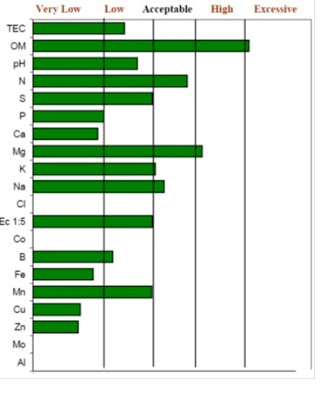A few weeks ago I requested a soil test kit from a soil testing company. They sent me several plastic zip-lock bags, instructions and a price list. I chose two areas in our top paddock to sample. The first was a bare patch and the second had relatively good pasture. I was hoping that the comparison of the two samples would assist us to improve the many bare patches on our 8 acres. I sent the two samples away for the 'premium test' and consultant report, at a total of $165/sample.
 |
| The bare patch (one of many!) |
 |
| The stainless steel core-sample tool (made by my husband of course!). |
 |
| The sample before I put it in the sample bag. |
 |
| The good growth area |
 |
| Sampling tool again |
 |
| The samples ready to send away |
We received the results a couple of weeks later. The results from both samples showed a low pH (5.3) and deficiencies in phosphorous, calcium, copper, boron, iron and manganese. These are all important minerals for plant growth and animal health. Fortunately the report lists the treatments that we should use. The main difference between the two samples was the sand content, the report suggests that the bare patch has more water repelling sand and recommends the addition of calcium and compost to correct this. We also need to apply lime, copper sulphate, rock phosphate and a few other things to get the balance right. We will need to source these chemicals in bulk, as we need several tonnes of lime. At least now we know how to improve, but it will be hard work spreading all these minerals around!
Overall I think that its money well spent as we know what we need to improve pasture and
what to feed to the animals in the meantime to keep them healthy.
 |
| An example of the test results graph. |
 |
| The soil treatments required. |
 |
| The comments about the bare patch sample. |
Have you used a soil test to analyse your soil minerals? Was it helpful?










Such a great idea to get a soil test. I have visions of your property in 20 years time - it's going to be so lush after all the care you guys have put into it.
ReplyDelete